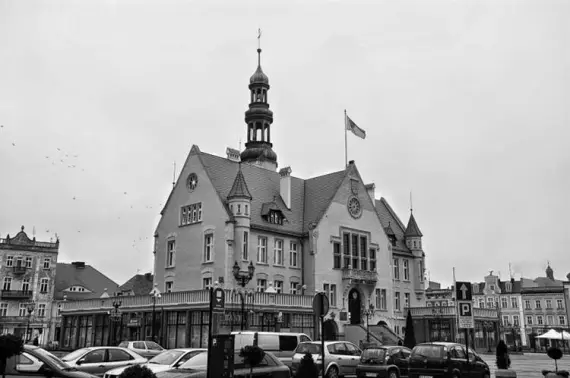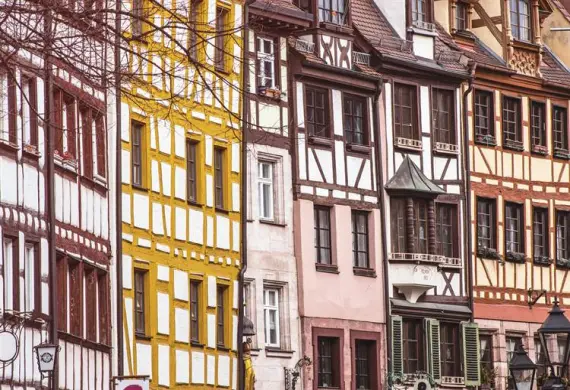Bus from KROTOSZYN to WITTLICH - find a connection and buy a ticket
KROTOSZYN

Krotoszyn is a town of nearly 29,000 people located in Greater Poland province on the Kaliska Plateau. It is located between Wrocław and Poznań, near Ostrów Wielkopolski, and is more than 600 years old. It was then that Krotoszyn was located under the Magdeburg Law thanks to King Wladyslaw Jagiello. It owes its name to the Krotowski family, who owned the city area in the 15th century.
Over the centuries Krotoszyn was repeatedly destroyed by various invasions or fires, but was rebuilt quite quickly, so that it did not lose too much of its importance and historical urban layout. In recent centuries, crafts (mainly shoemaking and tanning) and agriculture developed rapidly there.
While in Krotoszyn, it's worth seeing the market square with its historic townhouses and town hall from the late 17th century, as well as numerous churches, especially wooden ones - the church of St. Mary Magdalene from 1755 or St. Fabian and St. Sebastian from 1572, which looks like an Orthodox church. The city also has a charming park named after the Polish Army with a long history. In addition, it is surrounded by numerous forest complexes called Dąbrowa Krotoszynskie, where several scenic biking and hiking trails have been laid out.
Getting there - Krotoszyn
Krotoszyn is well connected with the rest of the country. National and provincial roads run through it. There is a train station and a bus station with daily connections to major cities and neighboring towns in Greater Poland. From the PKS Krotoszyn station you can also go to many European cities, mainly located in Germany, France, England or Italy.
Krotoszyn is a town of nearly 29,000 people located in Greater Poland province on the Kaliska Plateau. It is located between Wrocław and Poznań, near Ostrów Wielkopolski, and is more than 600 years old. It was then that Krotoszyn was located under the Magdeburg Law thanks to King Wladyslaw Jagiello. It owes its name to the Krotowski family, who owned the city area in the 15th century.
Over the centuries Krotoszyn was repeatedly destroyed by various invasions or fires, but was rebuilt quite quickly, so that it did not lose too much of its importance and historical urban layout. In recent centuries, crafts (mainly shoemaking and tanning) and agriculture developed rapidly there.
While in Krotoszyn, it's worth seeing the market square with its historic townhouses and town hall from the late 17th century, as well as numerous churches, especially wooden ones - the church of St. Mary Magdalene from 1755 or St. Fabian and St. Sebastian from 1572, which looks like an Orthodox church. The city also has a charming park named after the Polish Army with a long history. In addition, it is surrounded by numerous forest complexes called Dąbrowa Krotoszynskie, where several scenic biking and hiking trails have been laid out.
Getting there - Krotoszyn
Krotoszyn is well connected with the rest of the country. National and provincial roads run through it. There is a train station and a bus station with daily connections to major cities and neighboring towns in Greater Poland. From the PKS Krotoszyn station you can also go to many European cities, mainly located in Germany, France, England or Italy.
WITTLICH

Wittlich is located in western Germany, in the state of Rhineland-Palatinate. The town lies in the valley of the Lieser River, which is a tributary of the Moselle. This picturesque valley is surrounded by hills, vineyards and forests, which gives the area a unique charm. Wittlich is located about 30 kilometers northeast of Trier (Trier) and about 100 kilometers west of Frankfurt am Main.
Wittlich also offers a well-developed urban infrastructure, allowing residents to enjoy a wide range of services, stores, restaurants and entertainment. The city center features charming streets, a market square, cafes and stores, making it a pleasant place to stroll and store. The Wittlich neighborhood also offers many tourist and recreational activities. Nearby are the charming vineyards of the Moselle region, where you can taste delicious local wines and enjoy beautiful views of the river and surrounding hills. In addition, there are also numerous hiking trails in the area, ideal for walking, biking and outdoor activities.
Wittlich bus - how to get to Wittlich?
Wittlich is well connected with other cities in Germany. Important roads and highways, such as the A1 highway, pass through the city, making it easy to travel both by car and by public transportation. In addition, the city has a well-developed bus and train network, making it easy to travel both within and outside the region. We encourage you to take a look at our offer of minibus rides to Wittlich, which leave from various locations in Poland and bring passengers quickly and efficiently to their chosen destination.
Wittlich is located in western Germany, in the state of Rhineland-Palatinate. The town lies in the valley of the Lieser River, which is a tributary of the Moselle. This picturesque valley is surrounded by hills, vineyards and forests, which gives the area a unique charm. Wittlich is located about 30 kilometers northeast of Trier (Trier) and about 100 kilometers west of Frankfurt am Main.
Wittlich also offers a well-developed urban infrastructure, allowing residents to enjoy a wide range of services, stores, restaurants and entertainment. The city center features charming streets, a market square, cafes and stores, making it a pleasant place to stroll and store. The Wittlich neighborhood also offers many tourist and recreational activities. Nearby are the charming vineyards of the Moselle region, where you can taste delicious local wines and enjoy beautiful views of the river and surrounding hills. In addition, there are also numerous hiking trails in the area, ideal for walking, biking and outdoor activities.
Wittlich bus - how to get to Wittlich?
Wittlich is well connected with other cities in Germany. Important roads and highways, such as the A1 highway, pass through the city, making it easy to travel both by car and by public transportation. In addition, the city has a well-developed bus and train network, making it easy to travel both within and outside the region. We encourage you to take a look at our offer of minibus rides to Wittlich, which leave from various locations in Poland and bring passengers quickly and efficiently to their chosen destination.
© 2025 Sindbad
Technical support, assistance, payments: Sindbad IT
© 2025 Sindbad
Technical support, assistance, payments: Sindbad IT
